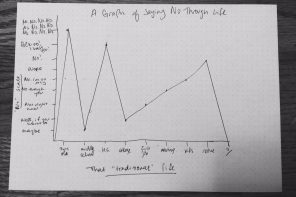
Boredom is the enemy. When I’m bored, I immediately pick up my phone to scroll mindlessly through articles that I don’t care about on Buzzfeed or watch meaningless YouTube videos. Sometimes I watch hours of 30 Rock instead of having to think of something else to do.
And it’s not just me. In high school boredom is fought against with endless homework and in adulthood, being busy (even if just with idle work) is a sign of success.
But maybe we’ve all got it wrong.
I recently came across a 2013 study by Dr Sandi Mann and Rebekah Cadman that found boredom might be a trigger for creative thinking. Their study was split into two parts. In the first, 40 people copied numbers from a telephone book for 15 minutes and then came up with uses for foam cups (to show their creativity). These 40 people were found to be more creative than the control group that didn’t copy numbers.
The second part of the study had 30 people copy numbers, as in the first, and 30 people read the numbers aloud. The control group was again found to be the least creative, but those reading aloud were found to be more creative than those writing. This, they concluded, could show that passive boring activities can enhance creativity, where more active boring activities can limit the scope of daydreaming and, thereby, creativity.
Researcher Dr Mann said, “Boredom at work has always been seen as something to be eliminated, but perhaps we should be embracing it in order to enhance our creativity.”
Exercise: Passive Boredom
I’ve often wondered why my cycling and hiking trips elicit more writing and dreaming than bouldering or watching TV. I’ve also constantly been amazed by the fantastical or unusually deep conversations that roll out of friends and strangers when we’re strung together during long, physical trips.
When I learned about this study, I couldn’t help but think that my favorite type of exercise, slow and steady motion, is very similar to reading numbers out of a telephone book. Walking or cycling for hours on end is often extremely boring and extremely inspiring.
Unlike other types of intense exercise, like rock climbing and spin class, low-level exercise requires a small dose of concentration, not acute focus. As the study found, this type of activity is best for producing daydreams. In tougher training, the brain is set on the task at hand, with no ability to move away from the present moment.
I may not be giving up all of my mindless activities (definitely not you, 30 Rock), but I think I’ve just found one more reason to hike (and one more reason not to go too fast!).













